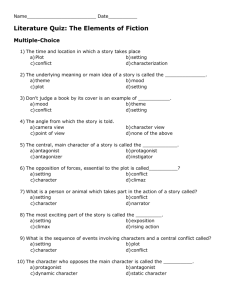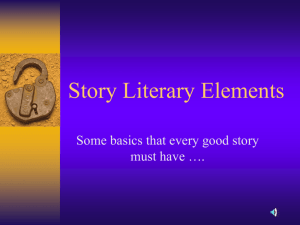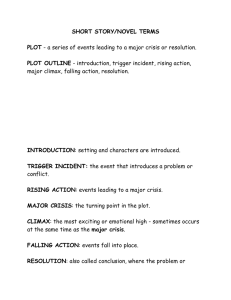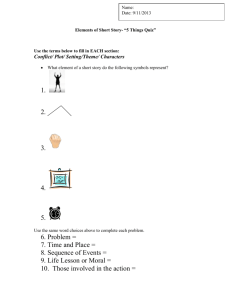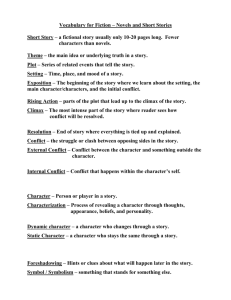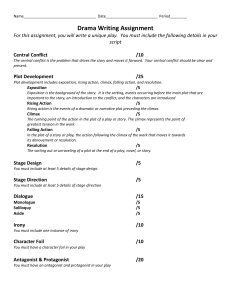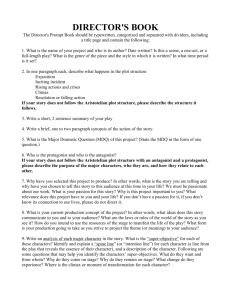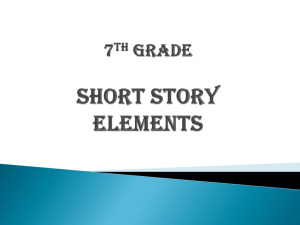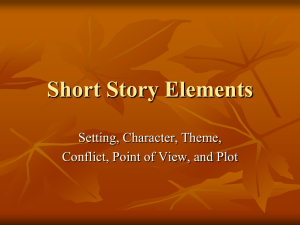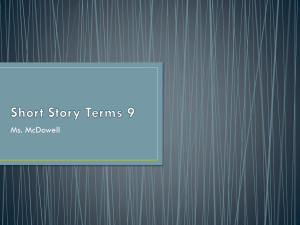Short Stories - WordPress.com
advertisement
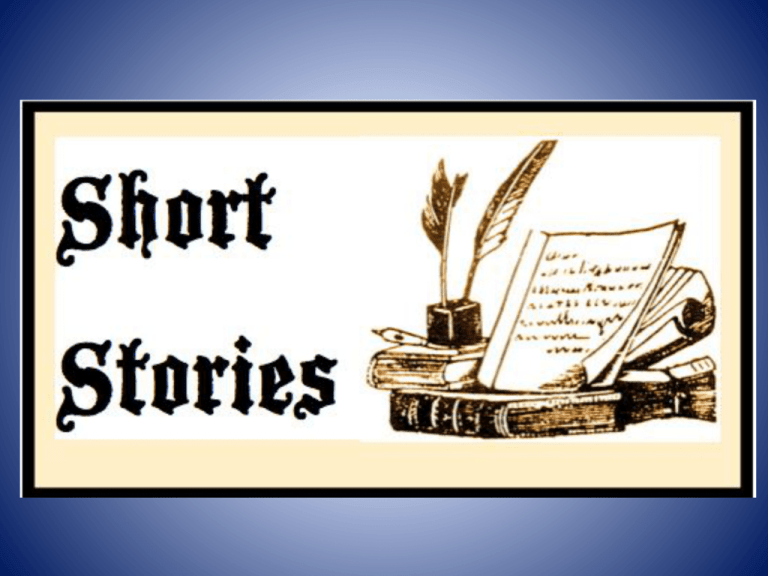
5 Key Elements of a Short Story: • • • • • Character Setting Plot Conflict Theme http://www.youtube.com/watch?v=c6I24S72Jps Characters: Major character: Characters most important to the development and resolution of the conflict. The story revolves around these characters. Minor character: Characters have small roles, but help move the plot events forward. Protagonist: The leading character, hero, or heroine of a text. Antagonist: A person who is opposed to, struggles against, or competes with another Point of View: The perspective from which a story or narrative is told. First Person: From the head and eyes of the person in the story. The narrator's voice is the main character's voice (I, we, me, us). Third Person Limited: Reader knows the thoughts, feelings and emotions of one character in a novel (he, she). Third Person Omniscient: Reader is all knowing. They know the thoughts, feelings and dialogue of many characters in a novel. https://www.youtube.com/watch?v=kb36YLptgQc How to reveal a character: • • • • • Through physical description Through what he/she says or thinks Through what other characters say or think How he/she thinks or says these things By his/her actions and reactions to situations Setting • Setting is used to identify and establish the time, place and mood of the events of the story. • Ex. It was dark and stormy at midnight on Crescent Avenue. • Use Description!!! Plot • The events that make up a story. • These events relate to each other in a pattern or a sequence. • The structure of a story depends on the organization of events in the plot of the story. 6 Plot Points What order do they go in? • • • • • • Resolution Initial Incident Climax Exposition Falling Action Rising Action 6 Main Plot Points 1. Exposition (Introduction) 2. Initial Incident 3. Rising Action 4. Climax 5. Falling Action 6. Resolution Conflict • A conflict is a literary element that involves a struggle between two opposing forces. • Conflict is usually between the protagonist and the antagonist. Types of Conflict • • • • • Man vs. Man Man vs. Himself Man vs. Nature Man vs. Society Man vs. The Supernatural Theme • Theme is defined as a main idea or an underlying meaning of a story that may be stated directly or indirectly. • Ex. The battle between fate and free will in The Alchemist. Key Definitions • Irony: words are used in such a way that their meaning is different from the actual meaning of the words. Ex. The massive dog’s name was Tiny. • Foreshadowing: The author uses words to hint at what is to come later in the story. • Simile: Comparing two things that are not alike by using “like” or “as.” Ex. The water was as smooth as glass. • Metaphor: Comparing two things that are not alike without using “like” or “as.” Ex. He is a lion in battle. • Imagery: Use words to represent setting, objects, and actions in such a way that it appeals to our physical senses. Ex. The fresh and juicy oranges are cold and sweet. Now you try!
